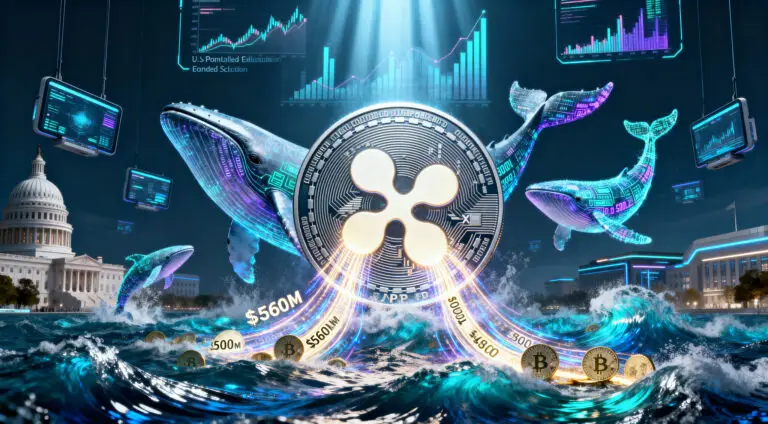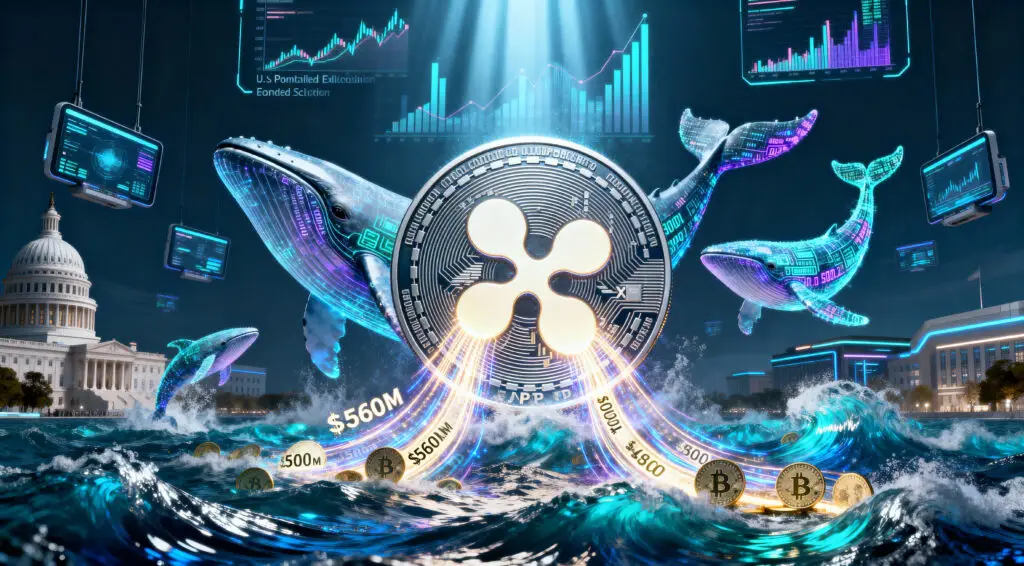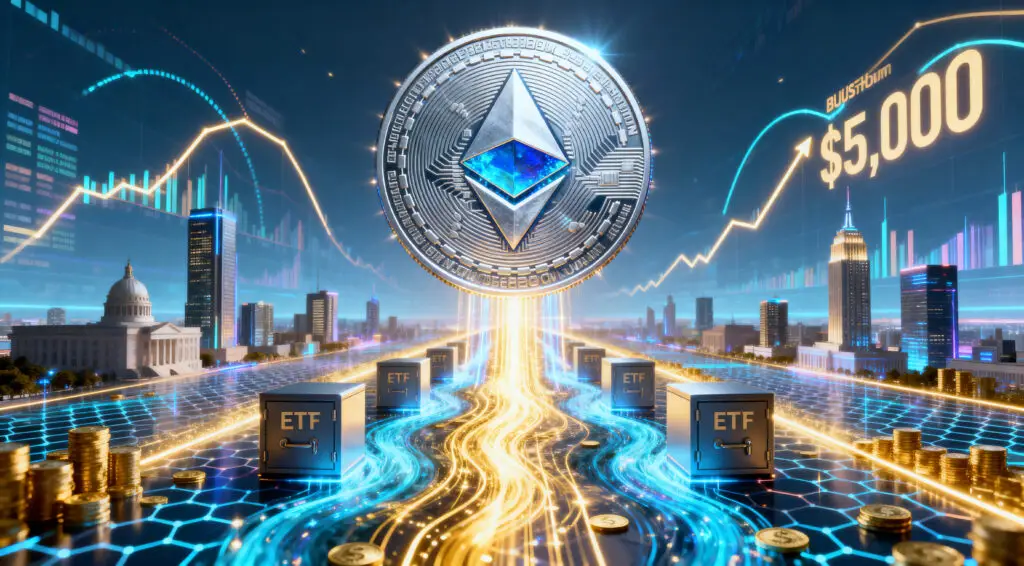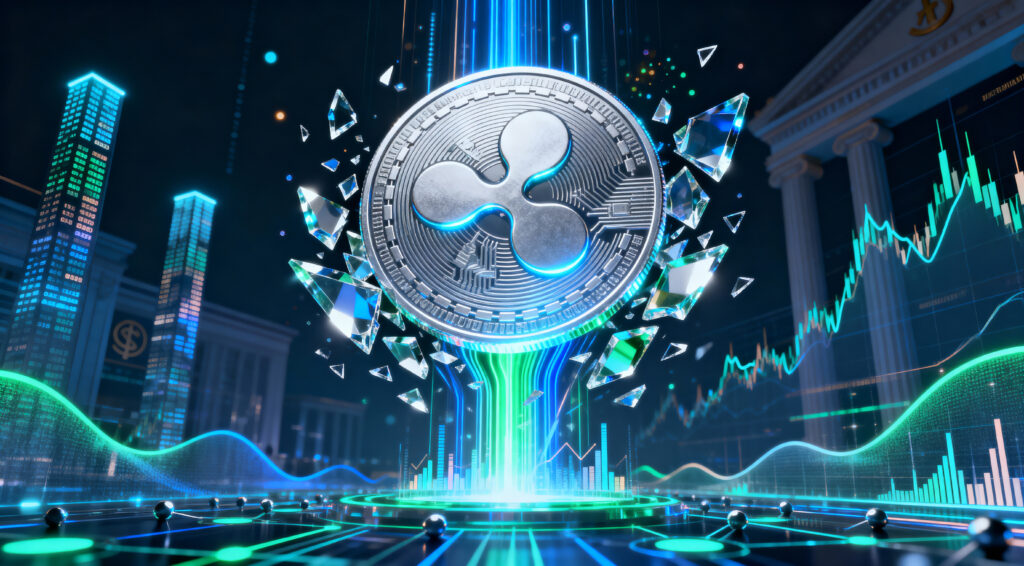The cryptocurrency market was showing signs of cautious optimism before the weekend on April 13, 2025, collectively exhaling after some trapped midweek volatility. There was some stagnation when looking at the global crypto market, as it has increased modestly towards $2.67 trillion. The modest increase is still a positive observable shift, especially after being battered by fears about the implementation of US tariffs. Some of the relief came from the 90-day imposition pacers lifted for selected goods, which raises hope of ending trade wars. The impact on the mood is visible too with the Fear and Greed Index, which moved from extreme fear earlier in the week to a more neutral 43-45. However, much lower overall trading volumes mean this is a temporary fix. The underlying problems haven’t yet been resolved.
Bitcoin Reclaims Ground, Faces Key Resistance
Bitcoin showed some strength, recovering much of the lost ground to now trade within a range of $84,300 to $85,300. The recovery from the lows close to $75,000 was mainly due to the relief in trade war tensions. Significantly, on-chain metrics showed large holders of Bitcoin (“whales”) were once again accumulating, implying confidence at these levels. On the other hand, the derivatives markets displayed striking interest on the short side, creating the conditions for a “short squeeze” if Bitcoin breaks resistance—currently looked at around $86,000. If this key level is breached, BTC could spike to over $90,000, while failing to get past this level would likely lead to a retest of support at roughly $76,000. Meanwhile, US spot Bitcoin ETF flows remained negative over the last week, but there was some indication of stabilising.
Ethereum’s price approaches $1600 while presenting mixed signals.
Ethereum followed the market recovery, trading between $1,597 and $1,617. The price had previously touched lows around $1,415 during the aggressive market sell-off. Some on-chain indicators suggested Ethereum on-chain might have crossed the capitulation phase for this cycle. Nevertheless, US spot Ethereum ETF outflows and downward price revision by Standard Chartered (reportedly from $10k to $4k for 2025) show sentiment headwinds. There are conflicting signals: potentially bullish weekly indicators that suggest an uptrend and bearish daily and short-term charts. Primary resistance surmounts $1,750, while support hovers around the recent lows.
Solana Leads Rebound Amid ETF Hopes
Solana showed notable recovery momentum, surging towards Solana’s $130 mark after a sharp increase from $96 weekly lows. The general market optimism and buzz around possible Solana spot ETF filings by asset managers like Grayscale and Fidelity added to the momentum. Investment activity in the Solana ecosystem’s DeFi and NFT markets continues to grow. Potential headwinds include Solana investment outflows from existing products and concerns about the network’s historical outages and institutional confidence mitigated by upgrades focused on enhancing network stability. Major technical resistance is in the $127-$134 range.
XRP Rallies Strongly on Multiple Fronts
XRP showed remarkable strength, reclaiming the $2.00 level decisively and attaining a range of $2.13 to $2.21. This recovery appears to be the result of several narratives coming together: Standard Chartered’s bullish long-term XRP price estimate, increased speculation regarding XRP spot ETF approvals, Ripple’s development of its RLUSD stablecoin, and ongoing RWA tokenization partnerships with Ondo’s OUSG. Positive sentiment was fueled by some progress towards the prolonged SEC legal dispute. With the $2.00 resistance scope cleared, XRP price targets shift to approximately $2.25 and $2.50.
Cardano’s Recovery In Tandem With The Market
Trading between $0.64 and $0.65, Cardano (ADA) rose with the broader market after retracing from the $0.57-$0.62 support zone. While speculative news around ETF inclusion or strategic reserves waiting confirmation is abundant, Cardano benefits from high staking ratios, which signify holder conviction. Development work still remains critical. On the technical front, ADA requires a break above USD 0.67-0.68 resistance to open further upside towards $0.85. If support is not maintained, a drop to lower levels becomes likely.
Meme Coins Headed Towards New Ranges
Both Dogecoin (DOGE) and Shiba Inu (SHIB) saw minor increases, with DOGE trading within $0.163-0.165 and SHIB around $0.0000123. Price movements were in line with improving market sentiment. Consensus suggests they are responsive to shifts in risk appetite. DOGE continues to be driven significantly by external narratives and mentions from influencers, while SHIB focuses on developments within its ecosystem, such as Shibarium and token burns, to shift utility beyond a meme identity. Meme coins remain highly speculative assets with targeted price ranges.
Ondo Finance RWA Strategy Gains Control
Ondo Finance (ONDO) made the most out of recent positive gains, trading around $0.88-$0.89. It is clear that investor attention has been captured due to its market leader status in the developing RWA tokenization economy. Some of the recent milestones include surpassing $1 billion in TVL, launching the Ondo Global Markets platform, and collaborating with Ripple to issue tokenized US Treasuries on the XRP Ledger. Its critical technical support has not yet changed, suggesting further upside potential from the compelling RWA story, but achieving success will require navigating complex regulations and widespread acceptance due to adoption constraints.
Sui ETF Filing Progress Drives Increased Activity
Strong performance has been demonstrated with Sui (SUI), as trading activity between $2.31 and $2.33 increased considerably over the week. Marking progress was the first spot Sui ETF filing as the Cboe exchange put forth the necessary rule change proposal to the SEC. This is a primary catalytic indicator of SUI interest in regulated environments for broader visibility, strategically increasing SUI’s visibility and accessibility from regulated investors. Enhanced ecosystem metrics and key partnership growth across active addresses consolidated bullish endeavours alongside stablecoin volume growth. SUI has become focused on regaining their $3 mark after overpowering their downtrend.
Pi Network Status: Continues Painful Decline.
Pi Network (PI) was trading within the $0.73-$0.75 range, showing recovery in the short term from the huge drop after its post-Open Network launch crash. Trading is also available on some tier 2 exchanges after the mainnet phase started in February 2025. However, the lack of listings on major exchanges like Binance or Coinbase still remains a critical problem that robs additional trust and liquidity. Alongside those, there are severe problems like extreme volatility, large anticipated token inflation, very limited real-world usability, and ongoing pain within the community regarding project communication and KYC processes. The broad range of expectations indicates the challenges the price of Pi Network is likely to face. As it stands, there is ambiguity and danger within the project, which reflects on these Western figures.
Sustained Momentum Still Needed for the Relief Rally
On April 13, 2025, the cryptocurrency market received some relief as the US paused some tariffs, giving the market a reason to shift from a state of panic to a neutral baseline. Bitcoin spearheaded the relief move by attempting to breach critical levels of resistance, and subsequently, many of the altcoins, like Solana, Sui, and XRP, surged further due to strong anecdotal evidence. They were being driven by specific positive narratives such as ETFs, RWA, and the increase in crypto utility. But the altcoin rally looks more automaton than human given the context, as trading volume post-crash has been tepid following the recovery attempt. The ongoing macroeconomic US-China trade tensions suggest that this calm period won’t last. The recovery attempt needs to be Donald Trump-level famous first; Bitcoin needs to break severe levels before volume confirms the entire market is indeed taking part in a rally. Investors, for now, have to accept the external dependence the market is experiencing and hope for good returns while managing risks.















